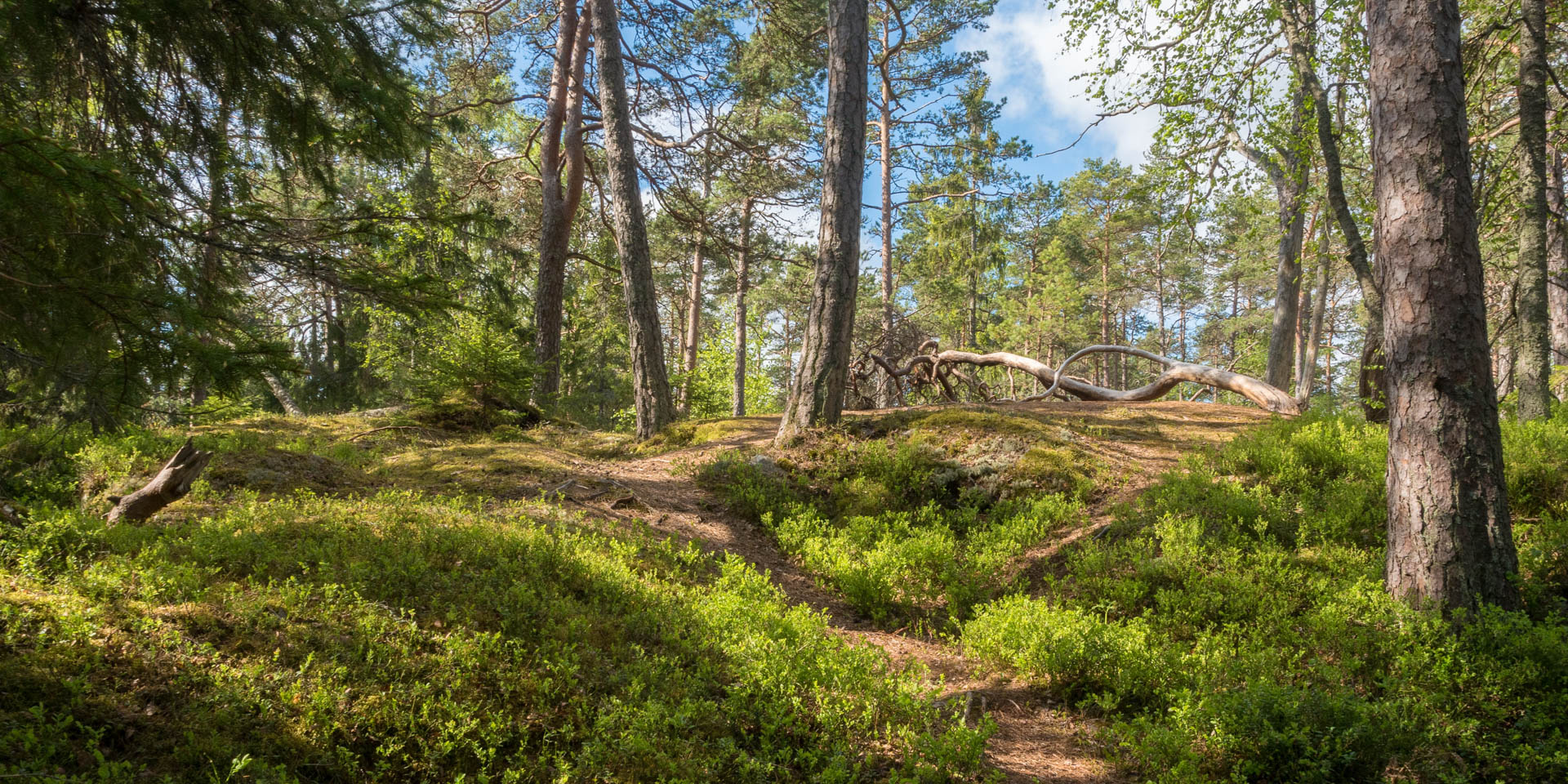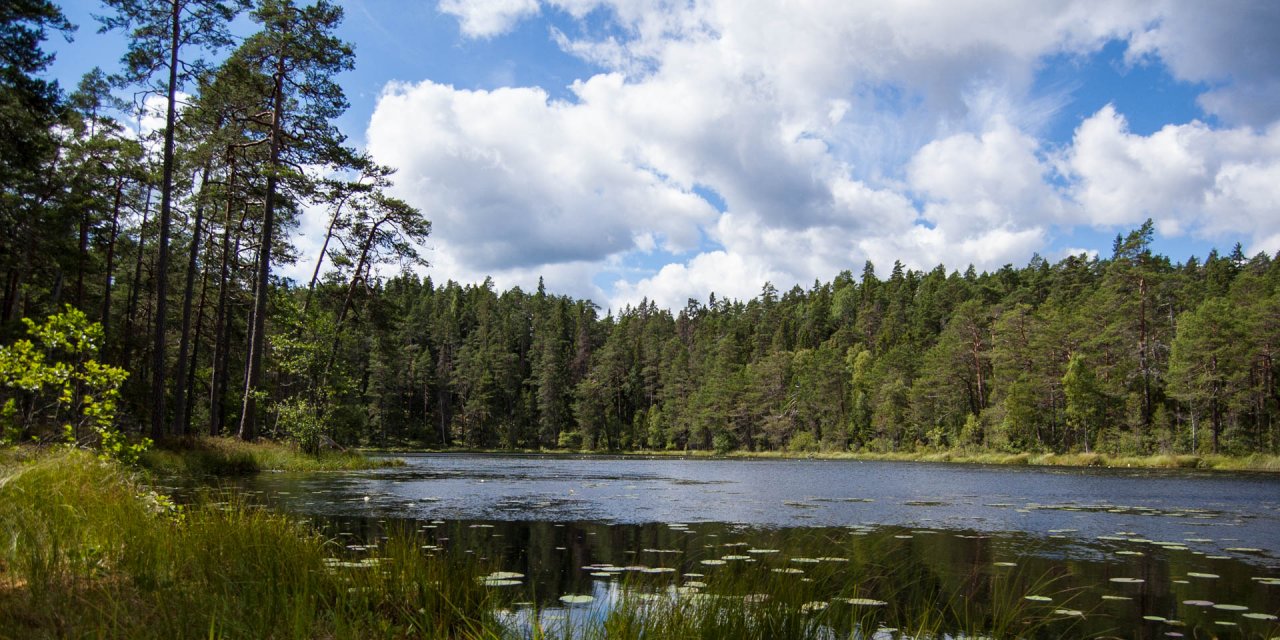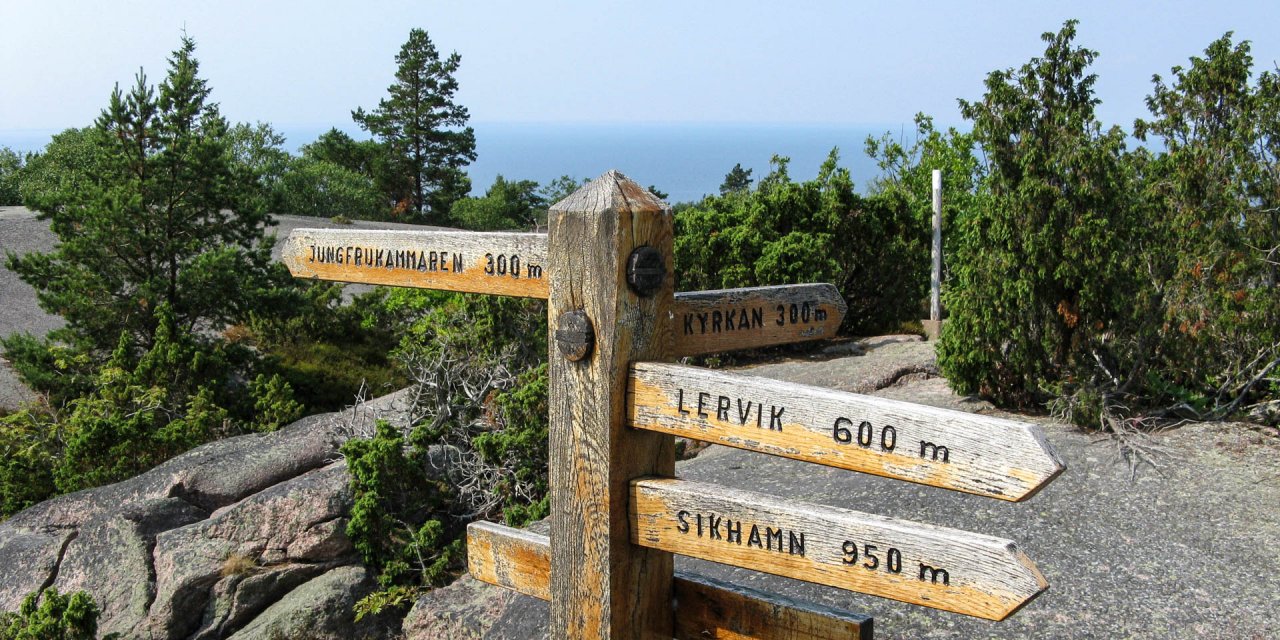

Tyresta Nationalpark
Nordic jungle near Stockholm
It is not necessary to travel to the north of Sweden in order to experience the fascination of untouched wilderness, because the Tyresta Nationalpark as the largest primeval forest area south of the northern Swedish mountain regions is located just 20 kilometres southeast of Stockholm.
The national park Tyresta has an area of 20 square kilometres and is located on the territories of the neighbouring municipalities Haninge Kommun and Tyresö Kommun. The main entrance of the national park is located in the historical village Tyresta By, about eight kilometres east of the central town Handen in the municipality Haninge.
On the west, north and east side, the Tyresta Nationalpark is enclosed like a horseshoe by the nature reserve Tyresta Naturreservat. The nature reserve serves as a buffer zone for the more strictly protected area of the national park and covers an area of about 30 square kilometres.
The landscape in the national park Tyresta
The national park is situated in a hilly landscape formed by the huge glaciers during the last ice age and was originally a mountain range. The effect of the ice masses can be seen most clearly in the rounded shapes of the rocks and sometimes also in the deep grinding marks milled into the primary rock by the 2,000-metre-high glacier. Where the rocks emerge through the vegetation, they are covered by a multitude of different and sometimes rare lichens and mosses.
The incomparable forest in the national park consists of ancient giant conifers, which are on average up to 400 years old. Between the mighty trunks, there is a thicket of branches and fallen tree giants, which are in various stages of decay. They form the basis of life for a number of mosses and tree fungi and above all for an army of insects that need the decaying wood as a breeding ground.
The rocky highlands are dominated by giant pines that are between 200 and 300 years old and older. The oldest specimen in the national park is over 500 years old. In the slightly more humid lowlands, mostly high-trunk spruces grow, which do not reach the age of the slower growing pines with a maximum of 250 years. However, they grow to heights of up to 30 metres and their denser branches ensure that it is much darker in the valleys and that the forest has a completely different atmosphere there than at higher altitudes.
Moors, lakes and animals of the national park
In the valleys between the hills there are numerous small moors and swamps with their very special vegetation. In addition, there are ten lakes of different sizes, whose clear water invites you to take a bath. At Stensjö, one of the largest lakes in the national park, there is a hill with the remains of a prehistoric refuge from which you have a wonderful view over the lake and the deep forests.
The animal world within the national park is extremely diverse. The mammals are represented by deer, snow hares, various marten species, foxes, squirrels and several species of bats. The bird population consists of about 112 different species that breed in the national park. Among them are rare species such as the Eurasian pygmy owl (Glaucidium passerinum), the smallest European owl species, and the rare western capercaillie (Tetrao urogallus), the largest European chicken bird, which occurs exclusively in pristine forests.
Explore Tyresta Nationalpark
15 marked trails with a total length of 55 kilometres lead through the national park. The trails are of different lengths, have different degrees of difficulty and lead through different areas within the varied nature of the national park. The easiest way to walk is the so-called Barnvagnsslingan, a five-kilometre circular trail through flat terrain, which is suitable for baby carriages and wheelchairs.
The 2.5 kilometer long Urskogsstigen is equipped with information panels that explain the special features of the primeval forest in a child-friendly way and is recommended for getting to know the national park for the first time. An advanced circuit is the six kilometre long Fornborgsslingan, which is considered to be the most difficult within the national park. It leads around the Stensjön and over the steep hill near the lake with the remains of a prehistoric refuge (swedish: Fornborg).
The national park is also suitable for a stay of several days and has several designated fireplaces, shelters and campsites, where one overnight stay with a tent is permitted in each case.
As a good source of information for the national park it is recommended to visit the Naturum at the main entrance in the village of Tyresta By. The floor plan of the building matches the outline of Sweden and not only provides detailed information about the special features of Tyresta Nationalpark, but also describes all other national parks in Sweden.



